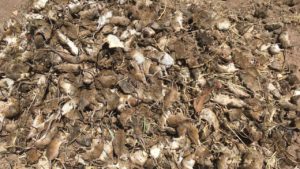

Anton Nilsson – September 23, 2021
Despite a lull over the winter, Australia’s mouse plague never ended – and now it’s threatening new areas of the country.
Large numbers of mice continue to plague rural Australian communities as farmers fear yet another crop will be ruined.
After dwindling in the winter cold, mouse populations have begun growing rapidly again, CSIRO mouse expert Steve Henry said.
“We’re quite concerned, given them the numbers that have been reported at the moment,” Mr Henry said.
NSW Farmers vice president Xavier Martin, who operates a farm in Gunnedah, said the new wave of mice would be a hard blow for farmers still reeling from the plague earlier in the year.
“A lot of farmers are on edge because they’re still trying to deal with contaminated hay and crops,” he said.
“Some contaminated produce had to be buried or burnt. So they’re very wary about this upcoming harvest and hay making.”
The mice are multiplying fast across a wide area that stretches from northern NSW to southern Queensland.
The worst-hit areas in recent weeks appear to be around Walgett and Moree in NSW, and in the Darling Downs in Queensland.
But there is also an area in Western Australia where mice are breeding fast, according to Mr Henry.

